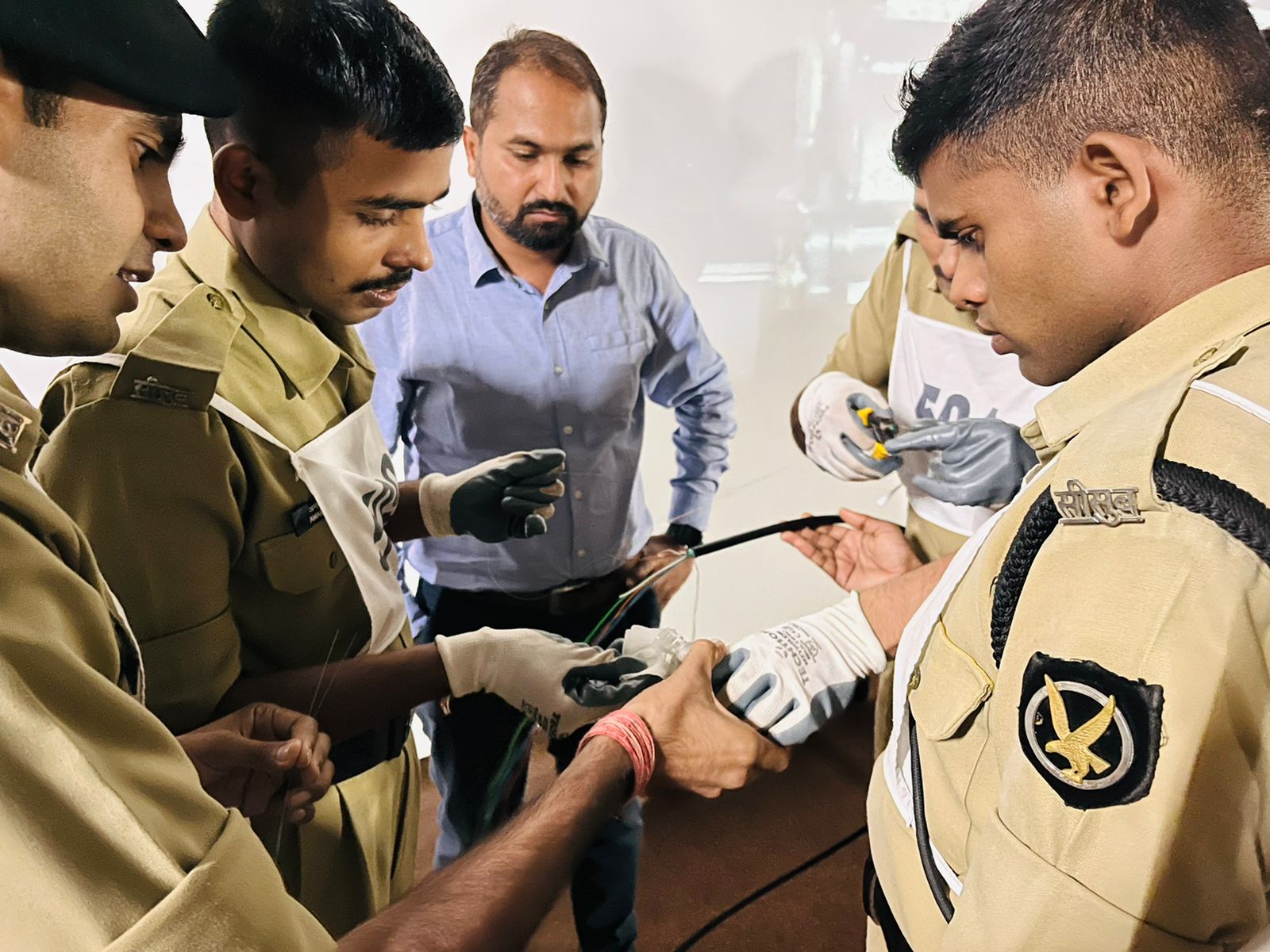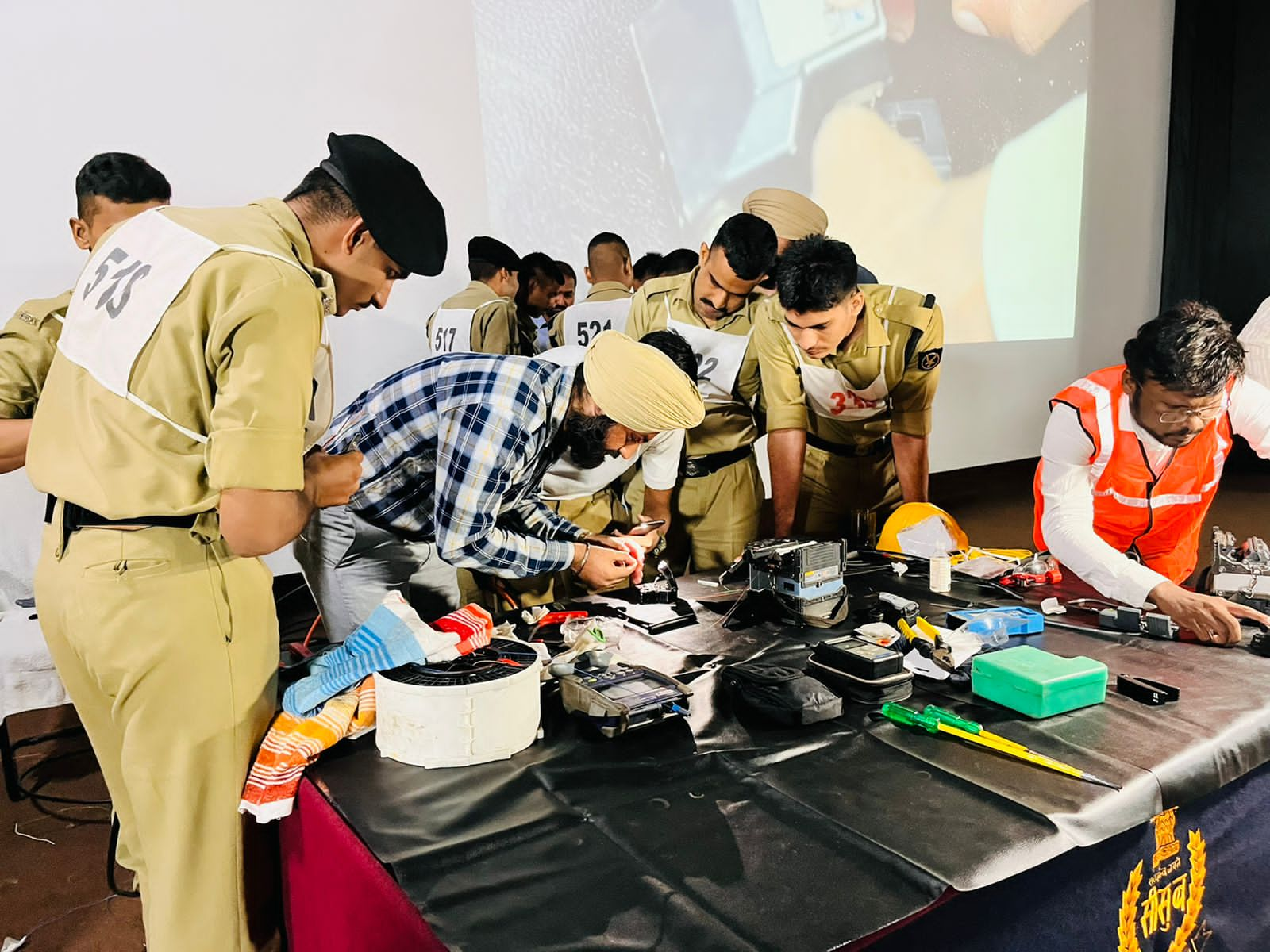This is a proud moment for Ramesh Awasthy, who is working as a senior technician in the Sashastra Seema Bal, an elite border guarding forces along Nepal and Bhutan border. He feels that he is fully capable to enable AI-based border security and be a part of the bigger national security mission. The young man, a diploma holder from a polytechnic, has recently completed a comprehensive training course in fibre signalling from the Delhi campus. This will help him design and construct fibre optic sensing-enabled border security systems.

Robust border security is very important to make sure that the citizens of India remain safe and sound. Our national defence forces are now using optical fibre as an enabler of national security and sensitive information maintenance.
Why border security matters
The nation faces an extensive defence and security perimeter with countries hostile towards it. India’s 15,000 km of land borders span some of the world’s most difficult terrains including mountainous tropical forests to deserts and marshes to densely populated areas. India’s diverse threat landscape makes it prone to varied threats emanating from cross-border terrorism and changing nature of conflicts. India’s national security landscape is stressed and susceptible to conflicts arising out of various situations.
Over 10 lakh personnel serve in eight paramilitary forces to mitigate threats and protect the nation against trans-border criminals, infiltrators, and hostile elements from indulging in the activities of intrusion, encroachment, and border violations. The BSF is tasked with guarding sensitive international borders with Pakistan (over 3,300 km) and Bangladesh (4,096 km). Owing to the vast territory and difficult terrains at these borders, 360o situational awareness becomes a must for BSF.
The challenge of coping with long-standing territorial and boundary disputes with China and Pakistan, combined with porous borders along some of the most difficult terrain in the world, has made effective and efficient border management a national priority.
For most of the time, India’s borders continue to be manned by a large number of Border Security Force (BSF) personnel. In wartime, the BSF is expected to hold the ground in less threatened sectors, as long as the BSF can deal with the enemy, without the army having to step in. And the BSF is tasked with protecting vital installations against attack by enemy paratroopers, with the army providing support. This also has led to the loss of lives during any emergency situation.
Given its vast and onerous responsibilities, the force requires considerable technical and infrastructure support, including advanced weapons, troop conveyance craft, and advanced electronic equipment for effective border management.
A radical way to end tedious and expensive physical security is by establishing cost-effective unmanned 24×7 security across vast terrains.
BSF requires modern technology support
From time to time, BSF has been taking several initiatives to combat these threats like 24×7 CCTV surveillance and deploying physical and non-physical barriers at borders, but this is not enough! What they need is to develop and effectively implement pragmatic counter-terrorism strategies, to combat insurgency, curb infiltration, and prevent smuggling and other anti-national activities across the border.
Recently, the force has successfully completed the task of erecting a fence on the border and is busy setting up electronic sensors to make the fence inviolable. They are setting up technology-led smart borders to curb infiltration.

Going forward, BSF requires constructing Fortified and Smart borders and bases for optimising physical patrolling and ensuring zero intrusions. This will lead to faster response time during emergencies and help in situational awareness through video analytics
Equipping BSF, contributing to national security
Our Defence force needs to modernise and mechanise expeditiously if it has to take on the security challenges of the future and emerge as a winner.
Keeping this in view, STL Academy, recently conducted a training workshop to train 600 BSF technicians in the latest splicing fibre technology, for joining two ends of optical fibre. This included mechanical splicing, ribbon splicing and fusion splicing. These skills are
vital to installing Fibre Optic Sensing (FOS) across borders.

Soldiers getting splicing training
Physical security can be drastically enhanced by using FOS. This top-end, IoT-intensive technology utilizes sensory optical fibre to spot intrusion via pressure, movement, or tampering. It is combined with smart devices to trigger real-time action. This state-of-the-art technology is accepted globally in high-security zones to facilitate intrusion-proof establishments
FOS is not just a single application technology but an ecosystem that provides multi-layered protection with a complete set of security devices such as cameras, smart power fences, searchlights, vehicle management systems, under-vehicle surveillance, unarmed aerial vehicles, and U/VHF devices. It is ideal for numerous use cases such as intrusion, detecting leakages in oil pipelines, buried covert detection, fence detection, pipeline & drainage detection, etc.
FOS is an innovative and flexible mechanism and can be deployed in a variety of terrains. The ecosystem is designed and developed to detect, classify & grade security concerns by analyzing mechanical vibrations. These scalable and futuristic FOS systems can be customized to work in different ecosystems and unforeseen situations.
FOS offers 360° surveillance for 24×7 and situational awareness in combination with a brilliant ‘threat-to-response’ mechanism. The outcome is a 100% intrusion-proof terrain.
While our BSF personnel are safeguarding the country’s borders against ever-rising imminent threats, the FOS ecosystem is truly the next significant change for offering intelligent surveillance and developing an unbreachable barrier as the primary defence mechanism.
The Optical Fibre Technician Training for BSF personnel will help them in learning the skills in Fibre Optic Sensing (FOS), in the area of splicing and optical fibre services deployment effectively in the defence and border area.



